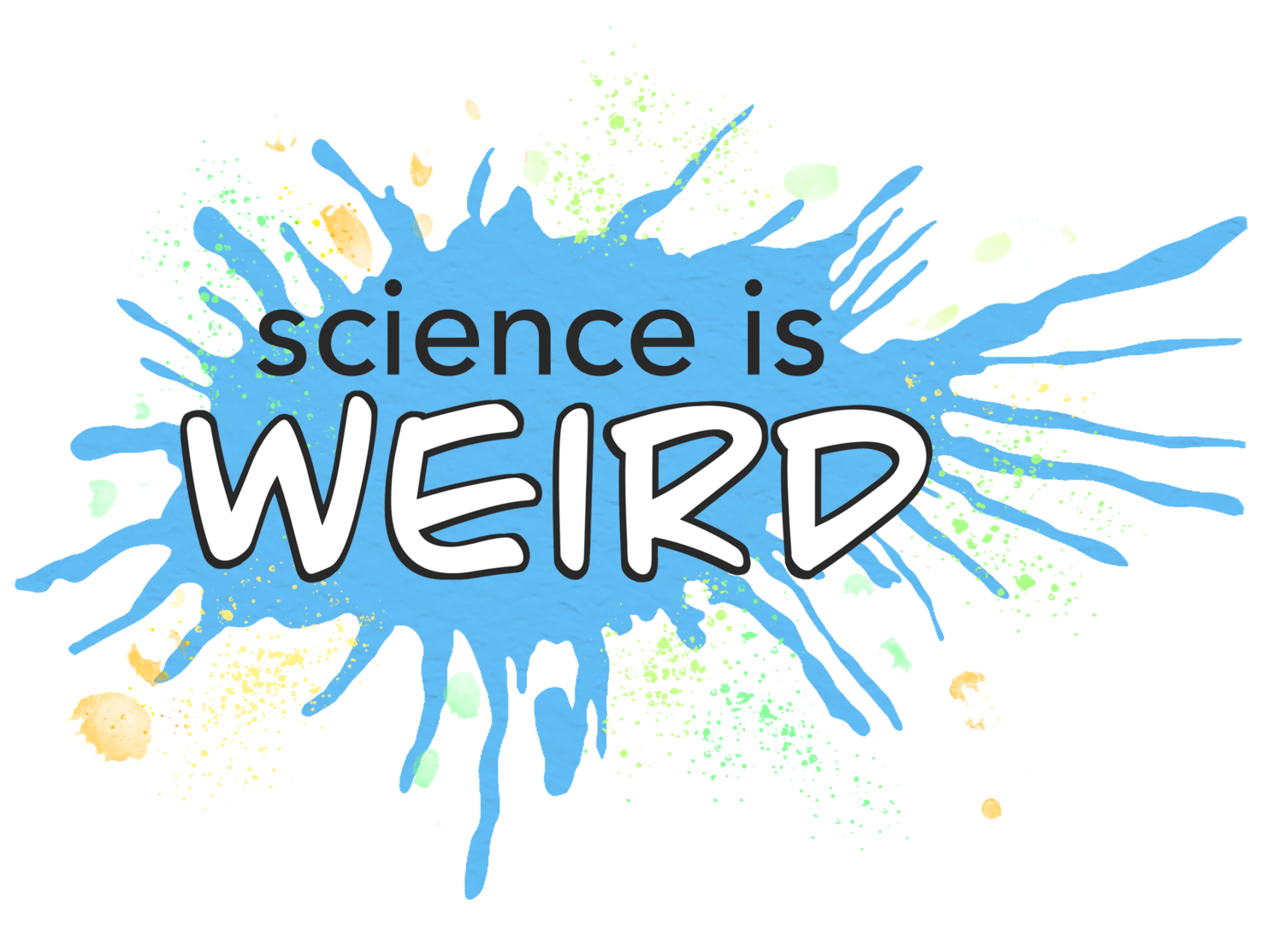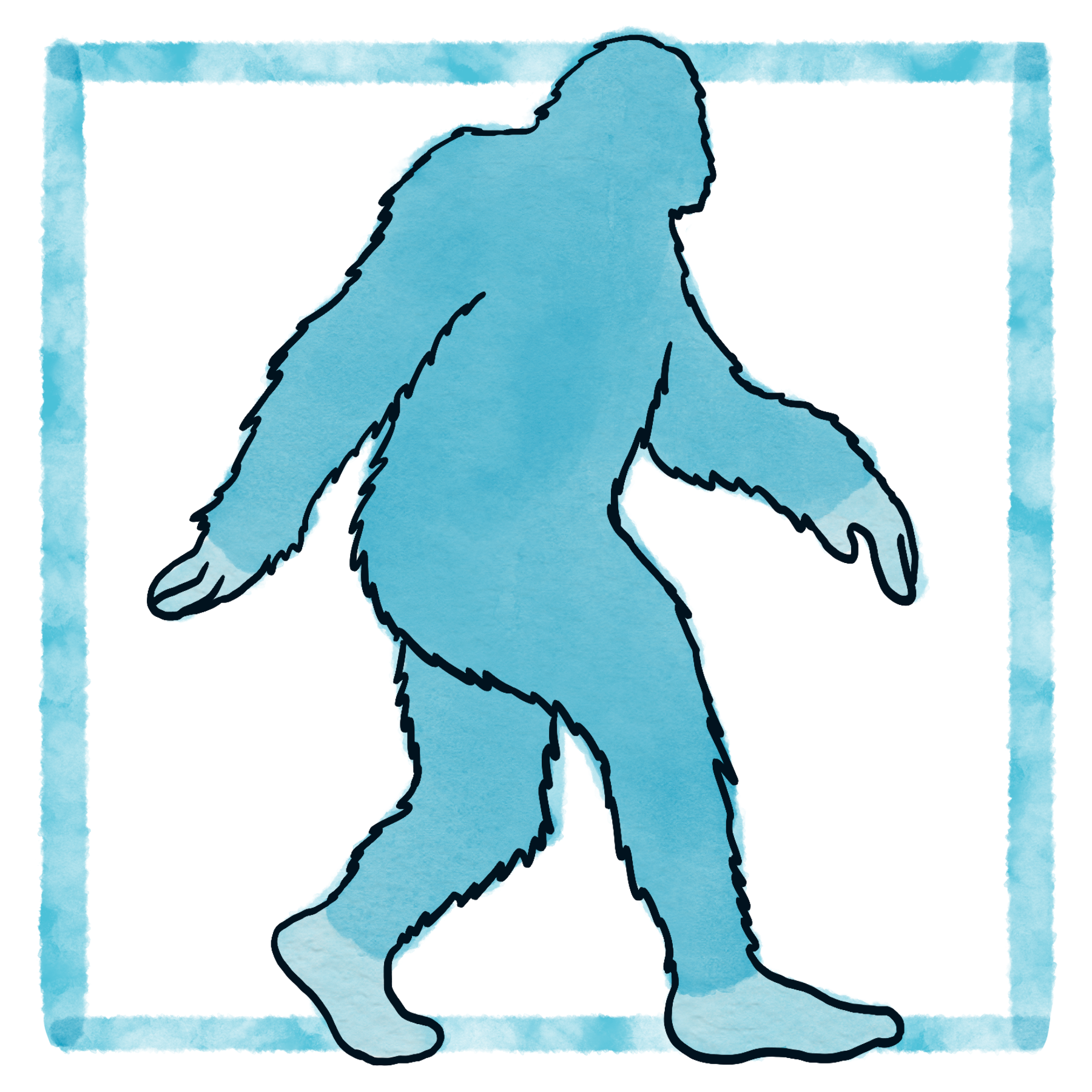"Believe" 1: Bigfoot (recordings)
After you purchase this product, you’ll receive an email with the recording links within 24 hours.
“I’m sure that they exist.”
– Jane Goodall, on Bigfoot(s)
What are the odds that Bigfoot exists? They’re not 100%… but they’re not 0%, either! Are they closer to 10%? To 1%? To 0.0001%? How could you tell?
Black-and-white thinking is a known flaw of human minds. We can outwit it by thinking in probabilities… but how do we do that?
This course is on “cryptids” — animals that are rumored to exist, but which haven’t been confirmed by science. (Think the Loch Ness Monster, or the Yeti, or the Chupucabra.)
If that makes you think this isn’t a very “scientific” course, think again: this is our most intense course yet on serious scientific reasoning. It’s organized around how to work with Bayes’ theorem — which many scientists consider “the one theorem to rule them all”.
“…you, a human being, want to learn about Bayes’ theorem.”
–Steven Pinker, from his book Rationality
It’s the key to bringing lots of different kinds of evidence together — and staying open to new ideas. In this course, we’ll “steelman” the pro-Bigfoot side, and then hold its feet to the mathematical fire. By the end, you’ll have computed your own personal probability of Bigfoot.
Sessions
This course is given as a live, week-long seminar — small, hyper-interactive, cameras-on lessons for kids 8 to 15. (That’s why they’re more expensive than the webinars.) They’re 90 minutes long. You can choose between two sessions:
Mornings: 12pm Eastern / 9am Pacific
Afternoons: 4pm Eastern / 1pm Pacific
They’re $250 for the whole week. You can also choose the recordings, which are only $150, and which you can keep to watch whenever you’d like.
Lesson descriptions
Lesson 1
Type of evidence: cultural stories & expert opinion
Tool of reasoning: probabilities
Where does the idea of Bigfoot come from? In this lesson, we’ll explore cultural stories of Sasquatch and other bipedal apes from around the world, and we’ll look at some famous experts (like Jane Goodall and David Attenborough) who believe it exists. We’ll also do a quick math review of how probabilities work, and preregister our guesses.
Lesson 2
Type of evidence: paleontology
Tool of reasoning: base rates
If Bigfoot existed, what kind of animal would it be? How closely related would it be to us? And what kind of evidence is there of such a creature ever existing? In this lesson, we’ll unearth human prehistory, and look at the fossil evidence of Bigfoot-like animals. We’ll also tell the story of how Daniel Kahneman discovered that humans are terrible at considering “base rates”.
Lesson 3
Type of evidence: eyewitness reports
Tool of reasoning: conditional probabilities & counterfactual thinking
What do we make of the fact that so many people claim to have seen Bigfoot? In this lesson, we’ll dive into the psychology of personal testimony. You’ll learn how perception and memory influence storytelling. We’ll also learn about how understanding conditional probabilities (and counterfactual thinking) is crucial for thinking clearly.
Lesson 4
Type of evidence: photographs & films
Tool of reasoning: Bayes’ theorem
What about the photos? What about the films?! In this lesson, we’ll look closely at the details of the famous 1967 Patterson-Gimlin film. You’ll learn how to tap into a community of thinkers. We’ll also (finally!) put together what we’ve been learning and unveil Bayes’ theorem.
Lesson 5
Type of evidence: physical evidence
Tool of reasoning: (practice using Bayes’ theorem)
What would it take to prove Bigfoot is real? How close do we come to that? In this lesson, we’ll examine the physical evidence that’s been brought forward for Bigfoot: hair samples, nests, and (of course) footprints. We’ll bring this all together with Bayes’ theorem, and show you how to become an intuitive Bayesian thinker.
After you purchase this product, you’ll receive an email with the recording links within 24 hours.
“I’m sure that they exist.”
– Jane Goodall, on Bigfoot(s)
What are the odds that Bigfoot exists? They’re not 100%… but they’re not 0%, either! Are they closer to 10%? To 1%? To 0.0001%? How could you tell?
Black-and-white thinking is a known flaw of human minds. We can outwit it by thinking in probabilities… but how do we do that?
This course is on “cryptids” — animals that are rumored to exist, but which haven’t been confirmed by science. (Think the Loch Ness Monster, or the Yeti, or the Chupucabra.)
If that makes you think this isn’t a very “scientific” course, think again: this is our most intense course yet on serious scientific reasoning. It’s organized around how to work with Bayes’ theorem — which many scientists consider “the one theorem to rule them all”.
“…you, a human being, want to learn about Bayes’ theorem.”
–Steven Pinker, from his book Rationality
It’s the key to bringing lots of different kinds of evidence together — and staying open to new ideas. In this course, we’ll “steelman” the pro-Bigfoot side, and then hold its feet to the mathematical fire. By the end, you’ll have computed your own personal probability of Bigfoot.
Sessions
This course is given as a live, week-long seminar — small, hyper-interactive, cameras-on lessons for kids 8 to 15. (That’s why they’re more expensive than the webinars.) They’re 90 minutes long. You can choose between two sessions:
Mornings: 12pm Eastern / 9am Pacific
Afternoons: 4pm Eastern / 1pm Pacific
They’re $250 for the whole week. You can also choose the recordings, which are only $150, and which you can keep to watch whenever you’d like.
Lesson descriptions
Lesson 1
Type of evidence: cultural stories & expert opinion
Tool of reasoning: probabilities
Where does the idea of Bigfoot come from? In this lesson, we’ll explore cultural stories of Sasquatch and other bipedal apes from around the world, and we’ll look at some famous experts (like Jane Goodall and David Attenborough) who believe it exists. We’ll also do a quick math review of how probabilities work, and preregister our guesses.
Lesson 2
Type of evidence: paleontology
Tool of reasoning: base rates
If Bigfoot existed, what kind of animal would it be? How closely related would it be to us? And what kind of evidence is there of such a creature ever existing? In this lesson, we’ll unearth human prehistory, and look at the fossil evidence of Bigfoot-like animals. We’ll also tell the story of how Daniel Kahneman discovered that humans are terrible at considering “base rates”.
Lesson 3
Type of evidence: eyewitness reports
Tool of reasoning: conditional probabilities & counterfactual thinking
What do we make of the fact that so many people claim to have seen Bigfoot? In this lesson, we’ll dive into the psychology of personal testimony. You’ll learn how perception and memory influence storytelling. We’ll also learn about how understanding conditional probabilities (and counterfactual thinking) is crucial for thinking clearly.
Lesson 4
Type of evidence: photographs & films
Tool of reasoning: Bayes’ theorem
What about the photos? What about the films?! In this lesson, we’ll look closely at the details of the famous 1967 Patterson-Gimlin film. You’ll learn how to tap into a community of thinkers. We’ll also (finally!) put together what we’ve been learning and unveil Bayes’ theorem.
Lesson 5
Type of evidence: physical evidence
Tool of reasoning: (practice using Bayes’ theorem)
What would it take to prove Bigfoot is real? How close do we come to that? In this lesson, we’ll examine the physical evidence that’s been brought forward for Bigfoot: hair samples, nests, and (of course) footprints. We’ll bring this all together with Bayes’ theorem, and show you how to become an intuitive Bayesian thinker.
After you purchase this product, you’ll receive an email with the recording links within 24 hours.
“I’m sure that they exist.”
– Jane Goodall, on Bigfoot(s)
What are the odds that Bigfoot exists? They’re not 100%… but they’re not 0%, either! Are they closer to 10%? To 1%? To 0.0001%? How could you tell?
Black-and-white thinking is a known flaw of human minds. We can outwit it by thinking in probabilities… but how do we do that?
This course is on “cryptids” — animals that are rumored to exist, but which haven’t been confirmed by science. (Think the Loch Ness Monster, or the Yeti, or the Chupucabra.)
If that makes you think this isn’t a very “scientific” course, think again: this is our most intense course yet on serious scientific reasoning. It’s organized around how to work with Bayes’ theorem — which many scientists consider “the one theorem to rule them all”.
“…you, a human being, want to learn about Bayes’ theorem.”
–Steven Pinker, from his book Rationality
It’s the key to bringing lots of different kinds of evidence together — and staying open to new ideas. In this course, we’ll “steelman” the pro-Bigfoot side, and then hold its feet to the mathematical fire. By the end, you’ll have computed your own personal probability of Bigfoot.
Sessions
This course is given as a live, week-long seminar — small, hyper-interactive, cameras-on lessons for kids 8 to 15. (That’s why they’re more expensive than the webinars.) They’re 90 minutes long. You can choose between two sessions:
Mornings: 12pm Eastern / 9am Pacific
Afternoons: 4pm Eastern / 1pm Pacific
They’re $250 for the whole week. You can also choose the recordings, which are only $150, and which you can keep to watch whenever you’d like.
Lesson descriptions
Lesson 1
Type of evidence: cultural stories & expert opinion
Tool of reasoning: probabilities
Where does the idea of Bigfoot come from? In this lesson, we’ll explore cultural stories of Sasquatch and other bipedal apes from around the world, and we’ll look at some famous experts (like Jane Goodall and David Attenborough) who believe it exists. We’ll also do a quick math review of how probabilities work, and preregister our guesses.
Lesson 2
Type of evidence: paleontology
Tool of reasoning: base rates
If Bigfoot existed, what kind of animal would it be? How closely related would it be to us? And what kind of evidence is there of such a creature ever existing? In this lesson, we’ll unearth human prehistory, and look at the fossil evidence of Bigfoot-like animals. We’ll also tell the story of how Daniel Kahneman discovered that humans are terrible at considering “base rates”.
Lesson 3
Type of evidence: eyewitness reports
Tool of reasoning: conditional probabilities & counterfactual thinking
What do we make of the fact that so many people claim to have seen Bigfoot? In this lesson, we’ll dive into the psychology of personal testimony. You’ll learn how perception and memory influence storytelling. We’ll also learn about how understanding conditional probabilities (and counterfactual thinking) is crucial for thinking clearly.
Lesson 4
Type of evidence: photographs & films
Tool of reasoning: Bayes’ theorem
What about the photos? What about the films?! In this lesson, we’ll look closely at the details of the famous 1967 Patterson-Gimlin film. You’ll learn how to tap into a community of thinkers. We’ll also (finally!) put together what we’ve been learning and unveil Bayes’ theorem.
Lesson 5
Type of evidence: physical evidence
Tool of reasoning: (practice using Bayes’ theorem)
What would it take to prove Bigfoot is real? How close do we come to that? In this lesson, we’ll examine the physical evidence that’s been brought forward for Bigfoot: hair samples, nests, and (of course) footprints. We’ll bring this all together with Bayes’ theorem, and show you how to become an intuitive Bayesian thinker.


